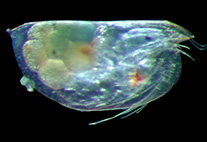Abstract
Herpetological surveys in the dry forests of the limestone massif Montagne des Français in the far north of Madagascarhave recently yielded a number of undescribed reptile species. Here we describe an additional new and potentially microendemic species of the snake genus Madagascarophis (Squamata: Serpentes: Pseudoxyrhophiinae) which lives in this massif syntopically with M. colubrinus septentrionalis and differs distinctly from M. colubrinus and M. meridionalis in its mitochondrial and nuclear DNA sequences. Morphologically Madagascarophis fuchsi sp. nov. is characterized by a broad contact between the posterior inframaxillaries (genials), 25 dorsal scale rows at midbody, and a low number of ventrals (171–172). We re-describe the holotype of M. ocellatus and present new data on the morphological variation of the northern subspecies M. c. septentrionalis and M. c. citrinus. Although Montagne des Français has recently been included into the network of nature reserves inMadagascar, continuous deforestation is strongly threatening this important center of reptile endemism. In line with the assessment of other microendemic reptiles of this massif we suggest to consider the new species as Critically Endangered according to the IUCN criteria and encourage new efforts to protect this area more efficiently

